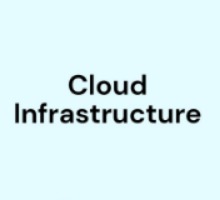Description
Introduction
This course is revolutionizing how applications are built and deployed in the cloud. It abstracts away the infrastructure management, allowing developers to focus solely on writing code and building applications. This model offers automatic scaling, improved efficiency, and cost optimization by charging only for actual usage, rather than pre-allocated resources. This course will cover the core concepts, advantages, and challenges of serverless computing and guide you on how to effectively use it to build scalable and efficient applications in the cloud.
Prerequisites
- Basic understanding of cloud computing and cloud service models (IaaS, PaaS, SaaS).
- Familiarity with programming languages such as JavaScript, Python, or Go.
- Knowledge of cloud platforms such as AWS, Azure, or Google Cloud Platform.
- Understanding of APIs, RESTful services, and event-driven architectures.
Table of Contents
- Introduction
1.1 What is Serverless Computing?
1.2 Key Characteristics of Serverless Architectures
1.3 Benefits of Serverless Computing: Scalability, Flexibility, and Efficiency
1.4 Use Cases - How Serverless Computing Works
2.1 The Serverless Model: Functions as a Service (FaaS)
2.2 Event-Driven Architecture in Serverless Applications
2.3 Serverless vs Traditional Computing: Cost and Management Comparison
2.4 Overview of Cloud Providers Offering Serverless Solutions (AWS Lambda, Azure Functions, Google Cloud Functions) - Building Serverless Applications
3.1 Writing Serverless Functions
3.2 Setting Up Serverless Architectures in the Cloud
3.3 Integrating Serverless Functions with Other Services (APIs, Databases, Storage)
3.4 Implementing Event Triggers and Data Flow in Serverless Applications - Serverless Computing on Major Cloud Platforms
4.1 AWS Lambda: Setting Up, Deploying, and Managing Serverless Functions
4.2 Azure Functions: A Comprehensive Guide for Serverless Applications
4.3 Google Cloud Functions: Best Practices and Use Cases
4.4 Comparing Serverless Offerings Across AWS, Azure, and Google Cloud - Managing Serverless Applications
5.1 Monitoring Serverless Functions(Ref: Cloud DevOps: Continuous Integration and Continuous Delivery (CI/CD) )
5.2 Error Handling and Logging in Serverless Architectures
5.3 Optimizing Performance in Serverless Environments
5.4 Deploying and Updating Serverless Applications - Scalability and Efficiency in Serverless Architectures
6.1 Auto-Scaling and Load Balancing with Serverless Computing
6.2 Cost Optimization Strategies for Serverless Applications
6.3 Ensuring High Availability and Fault Tolerance
6.4 Serverless and Microservices: Enhancing Application Scalability - Security and Compliance in Serverless Applications
7.1 Serverless Security Challenges
7.2 Best Practices for Securing Serverless Functions
7.3 Identity and Access Management in Serverless Architectures
7.4 Compliance Considerations for Serverless Environments - Advanced Serverless Patterns and Architectures
8.1 Building Multi-Region Serverless Applications
8.2 Using Serverless for Real-Time Data Processing
8.3 Serverless Databases and Storage Solutions
8.4 Hybrid Architectures: Combining Serverless with Traditional Cloud Services - Serverless in the Enterprise
9.1 Scaling Serverless Applications for Enterprise Use
9.2 Managing Large-Scale Serverless Deployments
9.3 Serverless Best Practices for Enterprises
9.4 Case Studies: Enterprise Success Stories with Serverless Computing - Future Trends and Innovations
10.1 The Evolution of Serverless Computing
10.2 Serverless Computing and Edge Computing
10.3 AI and Machine Learning in Serverless Applications
10.4 Predictions for the Future of Serverless Technologies
Conclusion
This course offers organizations the flexibility, scalability, and efficiency required to build modern applications in the cloud. By understanding its core principles, leveraging cloud-native tools, and adopting best practices for development, deployment, and management, you can optimize your application architecture and reduce operational overhead. As cloud providers continue to innovate, this will remain a key driver in the future of application development, helping you unlock new efficiencies and capabilities.






Reviews
There are no reviews yet.